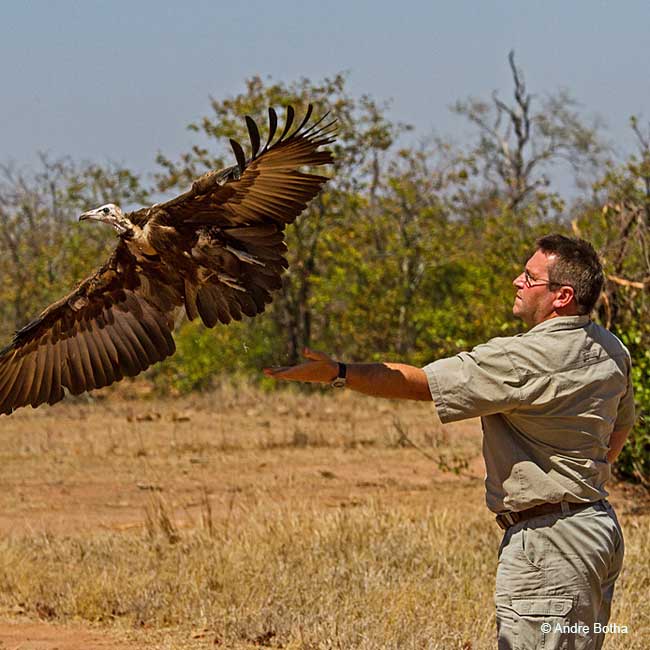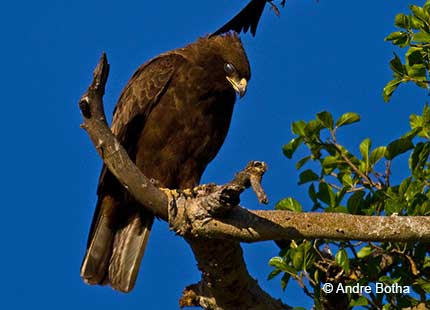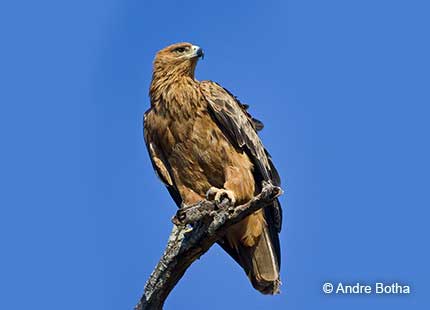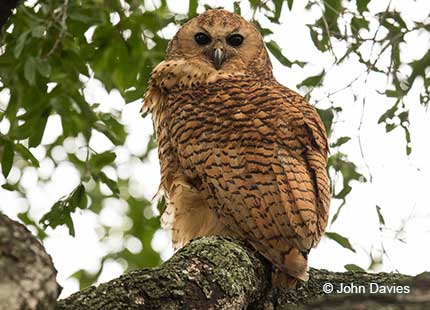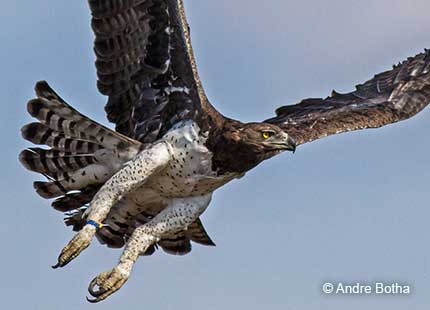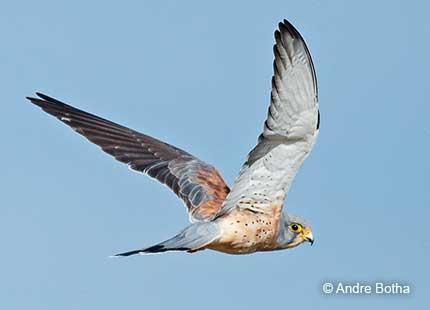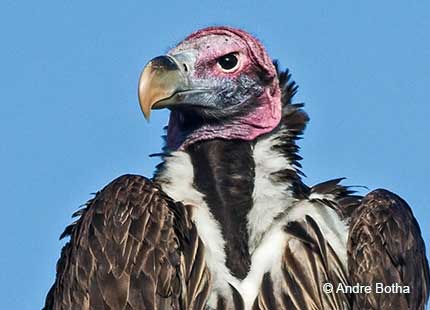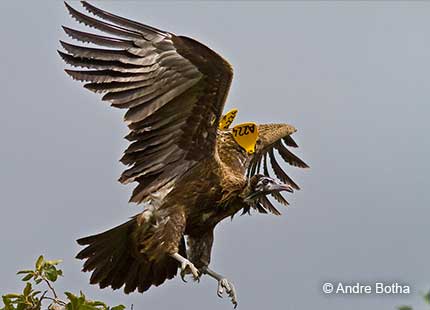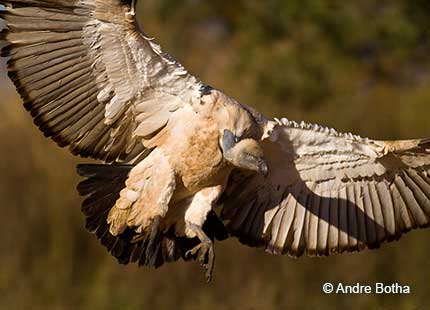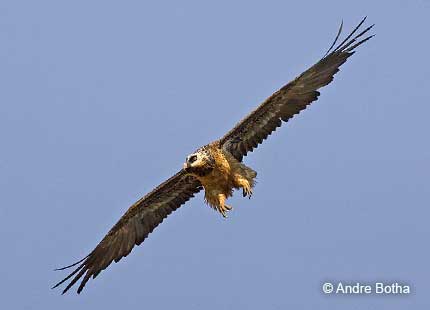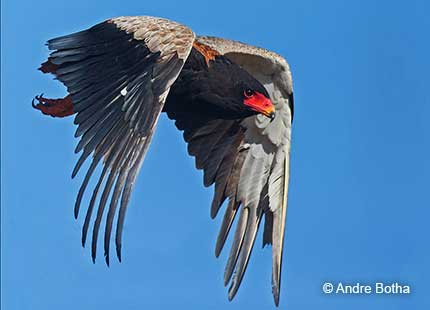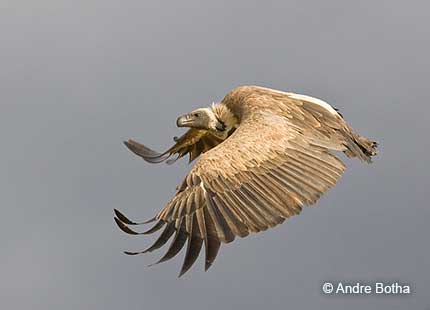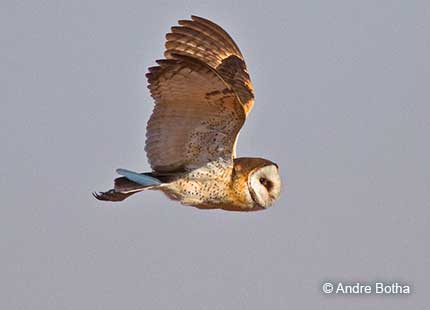birds of prey
programme
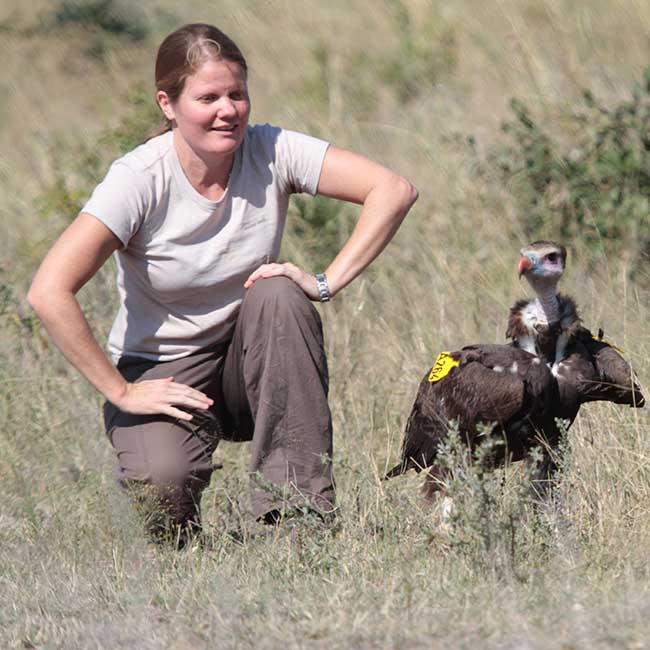
Saving Birds of Prey
What are birds of prey?
Birds of prey, also known as raptors, are largely carnivorous species that actively hunt and feed on other vertebrates (mainly mammals, reptiles, and smaller birds) and invertebrates. Birds of prey are built for this, with sharp eyesight and binocular vision for detecting prey or carrion (meat of dead animals) from a distance or during flight, strong feet with sharp talons for grasping or killing prey, and powerful, curved beaks for tearing flesh. Although birds of prey mainly hunt live prey, many species, including Bateleurs, Tawny Eagles, and vultures, also scavenge and eat carrion.
7
projects
6
countries
5
pack members

Why should we conserve birds of prey?
Birds of prey are iconic components of landscapes, from savannahs to mountain ranges, forests, grasslands, and river systems. They provide critical ecosystem services and are keystones for healthy habitats across Africa. Ecologically, birds of prey are the top avian predators in almost all terrestrial ecosystems worldwide. They play a key role in regulating prey populations and structuring natural communities. Vultures clean carcasses and other organic waste from the landscape, reducing the spread of diseases in wild and domestic animals and the transmission of pathogens to humans. Conserving birds of prey is essential to the health of ecosystems and other species. Birds of prey are equally important to people as they have social, cultural, and religious importance to many communities.
Threats to southern Africa’s birds of prey
Africa’s birds of prey face a wide range of threats. Poisoning, in particular, is driving many species towards extinction in the wild. They are also threatened by habitat loss and fragmentation, collisions and electrocutions on energy infrastructure, and persecution. Birds of prey, particularly vultures, are some of the most threatened animals on the planet. It is our responsibility to ensure that wild populations remain viable and healthy.

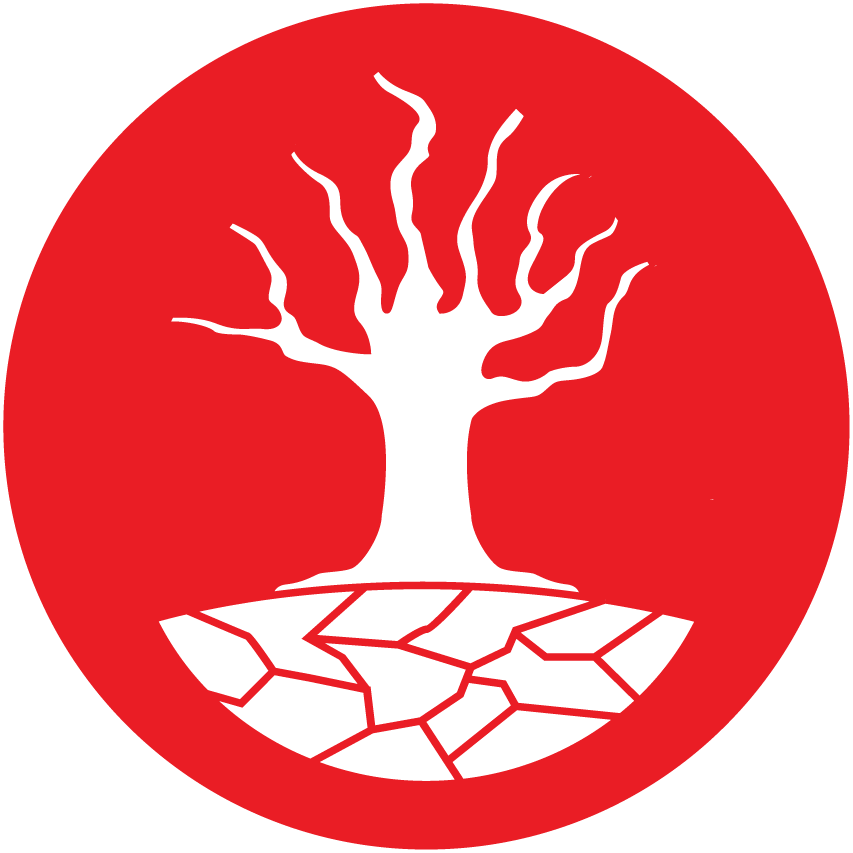


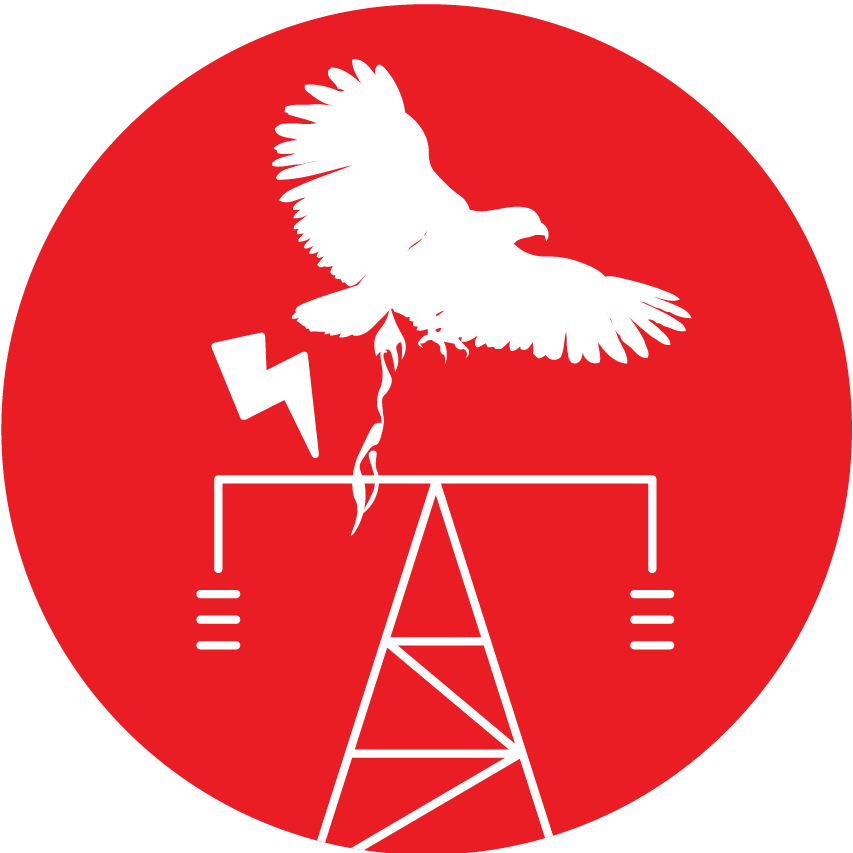
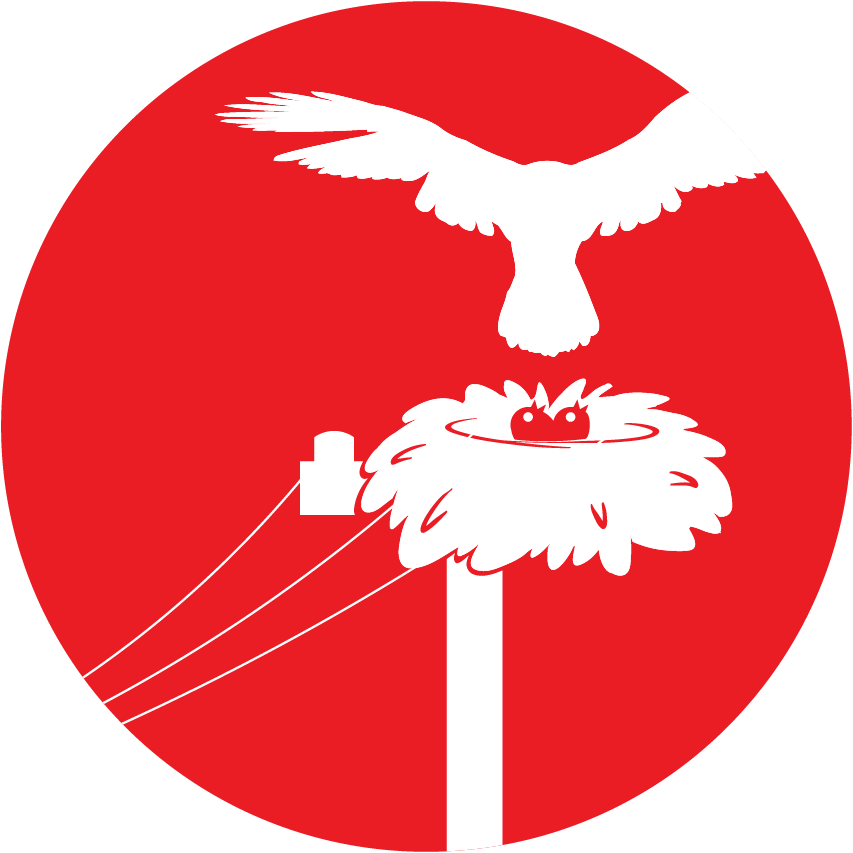
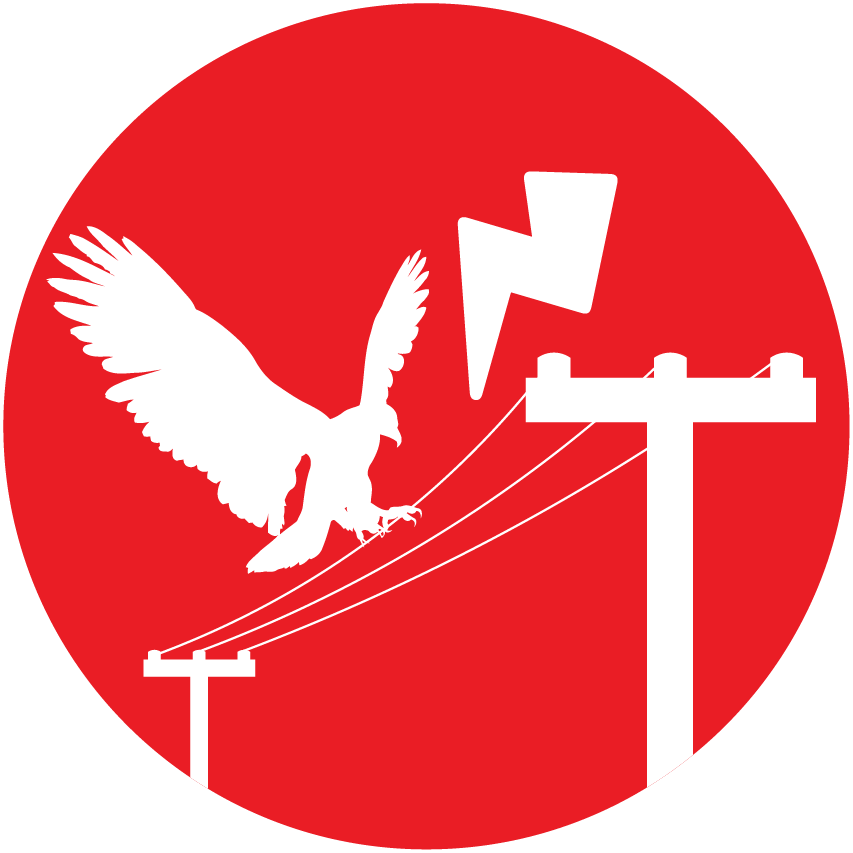
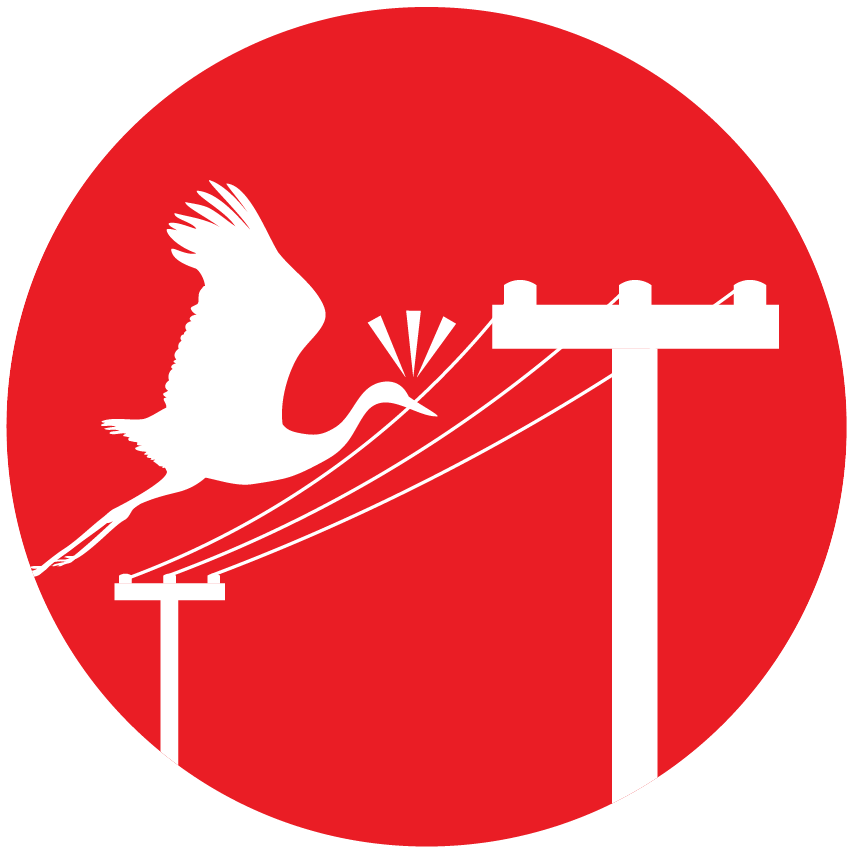
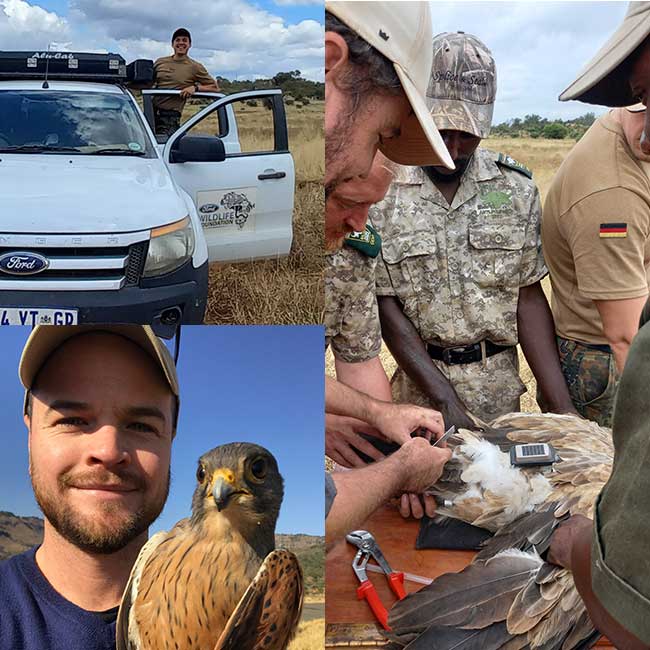
Our focal birds of prey species
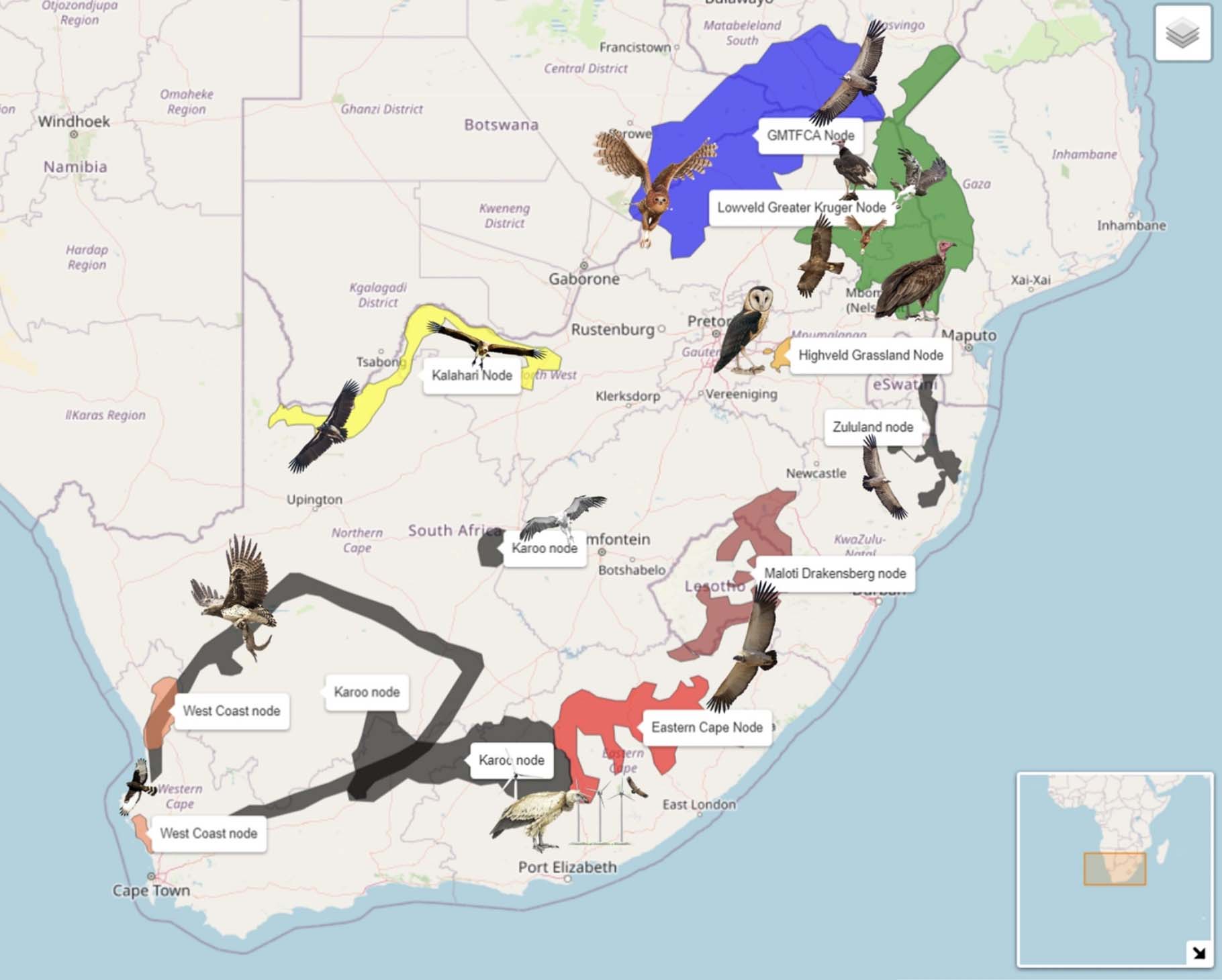
How we save birds of prey
The EWT’s Birds of Prey Programme (BOPP) originated with the establishment of the first of the EWT’s working groups, the Vulture Study Group (VSG), in 1973 – the year the EWT was founded. The VSG primarily focused on conserving and monitoring the Cape Vulture (Gyps coprotheres) and other vulture species in southern Africa. The EWT’s Raptor Conservation Group was established in 1991 to conserve southern Africa’s raptors and owls through projects such as the Kalahari Raptor Project and the Migratory Project. The Birds of Prey Working Group, later to become the Birds of Prey Programme, came about when we merged the VSG and the RCG in 2004.
The EWT’s Birds of Prey Programme aims to improve population trends of threatened birds of prey in southern Africa and ultimately improve the conservation status of priority species. We are committed to protecting key species and the spaces they depend on. Our work to conserve raptors contributes to preserving habitats and the ecosystem services they provide that support other wildlife and people. We create and secure safe spaces where raptors can breed, feed, and flourish. All of our projects are guided by science, and we continually monitor the populations we work with to better understand the threats they face and the impact of our work.
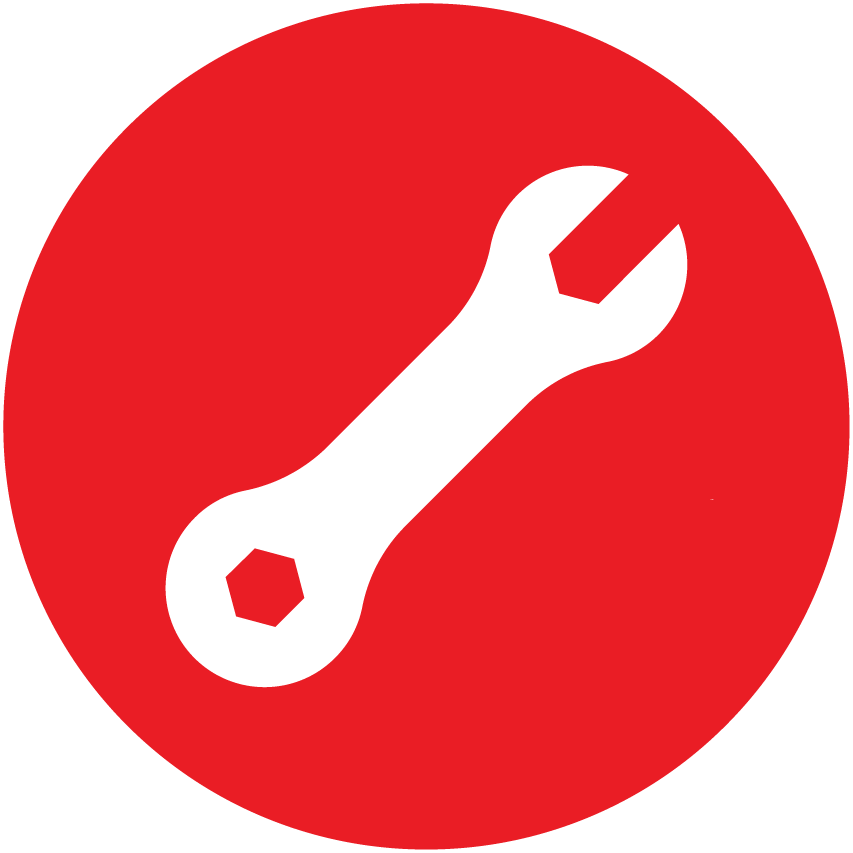


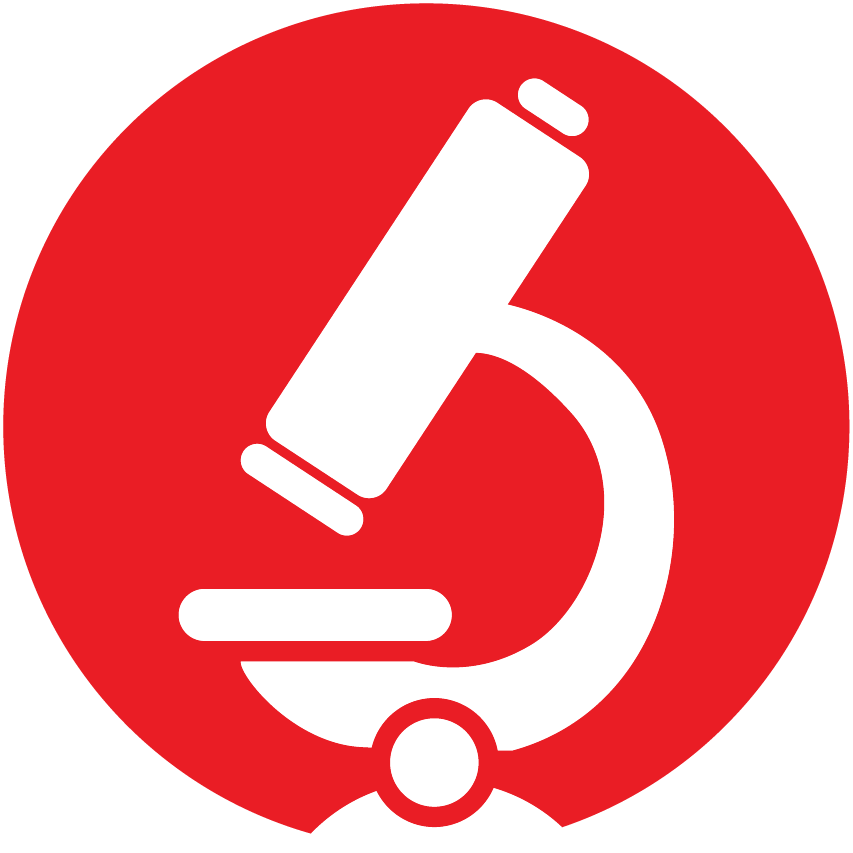
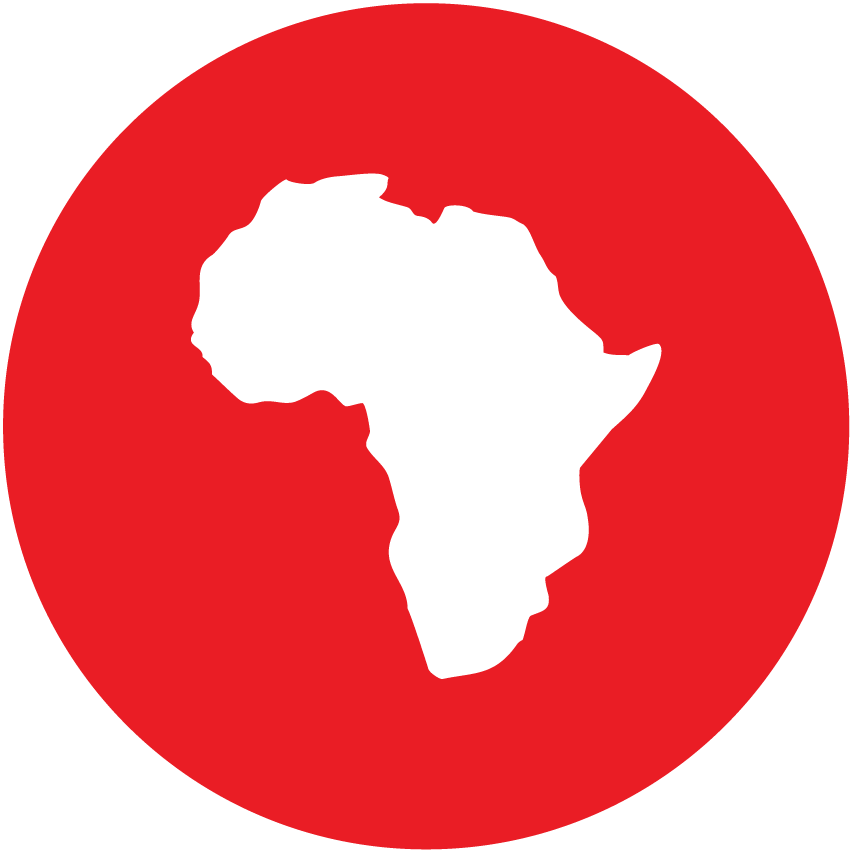

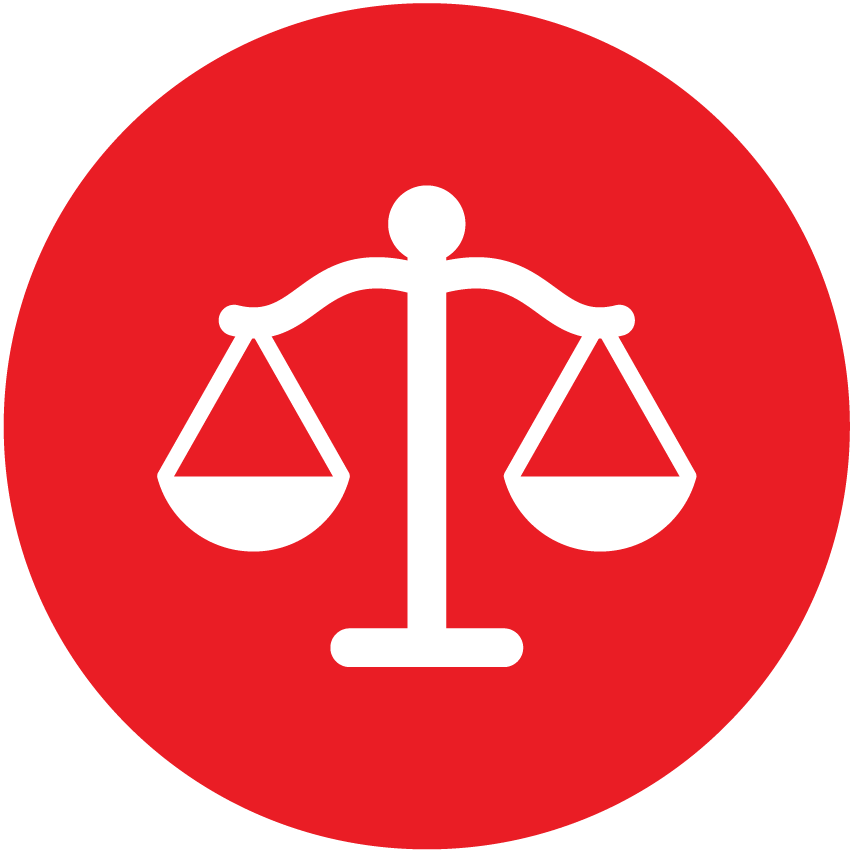
The EWT Birds of Prey Programme operates in eight of South Africa’s provinces, as well as Lesotho, Namibia, Zimbabwe, Mozambique, Swaziland, and Botswana. Our priority sites are shown on the map.
Population monitoring, applied research, and conservation
Knowing, doing, telling. From vultures soaring over our vast savannahs and eagles sailing across the arid Karoo to raptors living along our meandering river systems, this project forms the heartbeat of the Birds of Prey Programme. It lets us keep a finger on the pulse of key raptor populations across our project sites. Monitoring these populations increases our understanding of their behaviour, biology, ecology, habitat requirements, population statuses, trends, and the threats to them and their habitats. Our research leads to targeted action that protects raptor habitats and guides our techniques for rehabilitating, restoring, and expanding vital raptor habitats. It enables us to develop effective, scientifically robust management plans and improve conservation actions.
Our population monitoring, applied research, and conservation planning project comprises several sub-projects, which focus on specific species guilds or habitats that house important raptor species. These include threatened vultures, eagles, owls, harriers, and migratory falcons and kestrels. We work with multiple partners and research institutes to achieve this work.
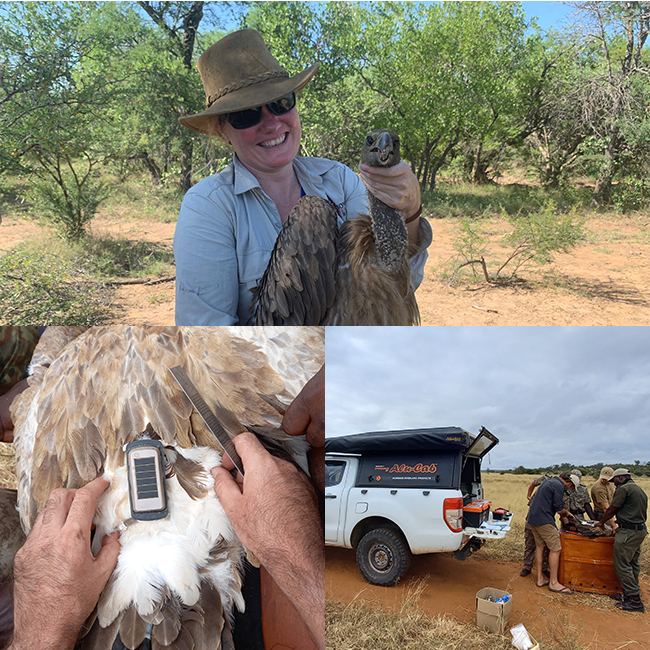
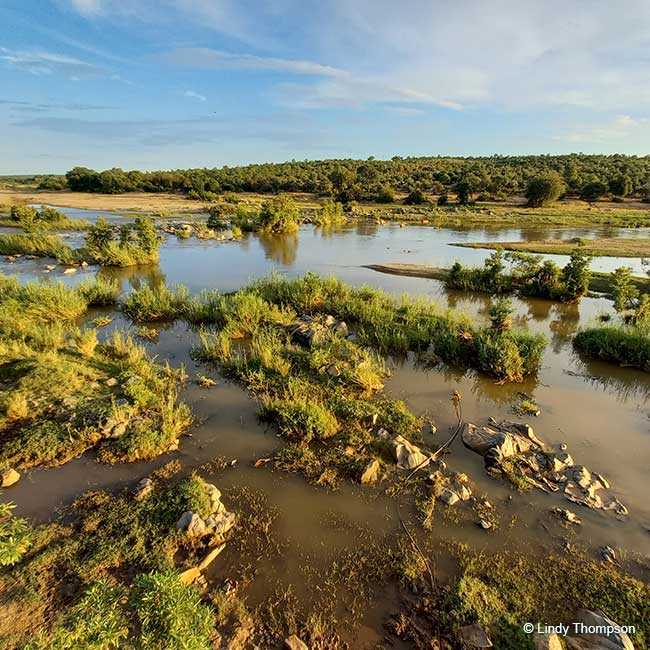
Raptor Safe Space Project
Creating threat-free landscapes for southern Africa’s threatened raptors. This project aims to safeguard, expand, and promote core breeding and foraging habitats for threatened raptors across our project sites and address and reduce key threats to raptors within these spaces. We use data from our monitoring activities to develop and integrate species and habitat management plans for areas with important raptor habitats. We work directly with landowners to reduce and remove major threats within landscapes, including unsafe energy and agricultural infrastructure, development, disturbance, roadkill hotspots, intentional and unintentional poisoning, and human-wildlife conflict. We also help landowners to improve land use management practices (fire regimes, grazing, etc.) to conserve and restore critical habitats for raptors and other wildlife.
In concert with removing key threats from the landscape, we also aim to improve the protection status of priority raptor habitats through conservation agreements such as custodianships or biodiversity agreements, and formal legal processes (i.e., stewardship, conservation servitudes, and Important Bird Areas (IBA). Ultimately, we strive to create a network of raptor safe spaces across priority raptor ranges. We complement this work with education and awareness-raising campaigns to improve people’s attitudes and appreciation of raptors within focal sites, harnessing a network of conservation support from governmental agencies, local conservation authorities, developers, communities, and traditional authorities. Notably, this work has broad conservation benefits for other plants and animals sharing our focal species’ habitat.
Creating Safe Space for African Eagles
With critical information from our eagle monitoring and research, we address the major threats to eagles across our project sites and improve the protection status of priority eagle habitats. Through targeted education and awareness campaigns, we work closely with communities and farmers to reduce persecution and poisoning and resolve conflict issues, largely involving the loss of livestock to eagles and other predators. We also promote a greater appreciation for eagles and their roles in ecosystems.
Creating Safe Space for River Raptors
This project aims to stabilise and reverse the degradation of rivers and associated riparian systems along the Limpopo and Blyde rivers, as well as the lower reaches of the Olifants. We prioritise retaining the ecosystem services critical to the survival of raptors and other plants and animals.
We use sensitive flagship species such as the Pel’s Fishing Owl (Scotopelia peli) and Hooded Vulture (Necrosyrtes monachus) to secure this habitat using:
- A suite of tools for commercial farmers to use to reduce their use of fertilisers and water.
- Proactive interventions, including providing artificial nests and supplementary feeding schemes to support and recover vulture populations.
- A community-based reforestation project and revegetation of areas significantly affected by humans.
- Legislation to protect key areas along the Blyde River and benefit farming communities.
Creating Safe Space for Grassland Raptors
With over a decade of conservation and research focused on African Grass Owls (Tyto capensis) and their associated grassland and wetland habitat, the Birds of Prey Programme’s Grass Owl conservation work on the Highveld coal belt is at a turning point. We are using research to inform targeted conservation interventions. The project, in partnership with Mafube Coal and National Geographic, creates safe spaces for Grass Owls to forage and breed in perpetuity, focusing on securing active breeding habitats, improving the protection status of important Grass Owl habitats, raising conservation awareness about Grass Owls among local stakeholders, and restoring suitable grassland patches within priority sites. We use Grass Owls as Guardians of the Grasslands. As we conserve them, we are restoring and conserving important wetland and grassland ecosystems to benefit other wildlife and people dependent on these habitats.
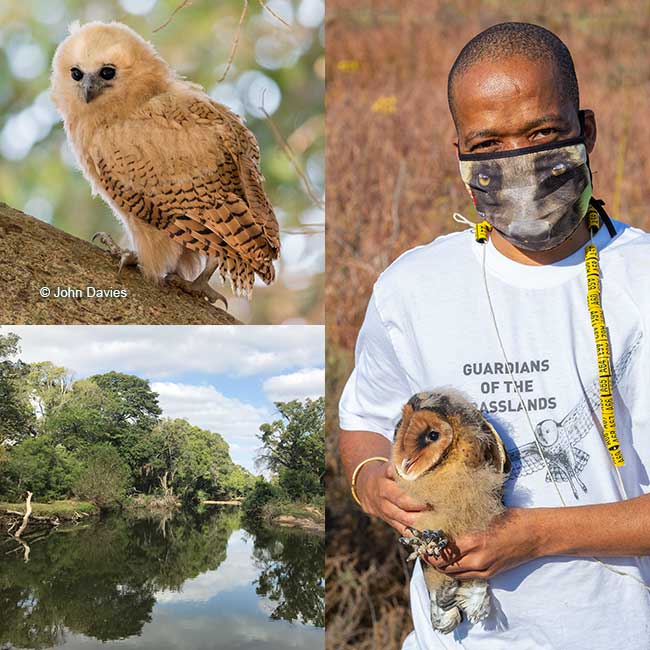
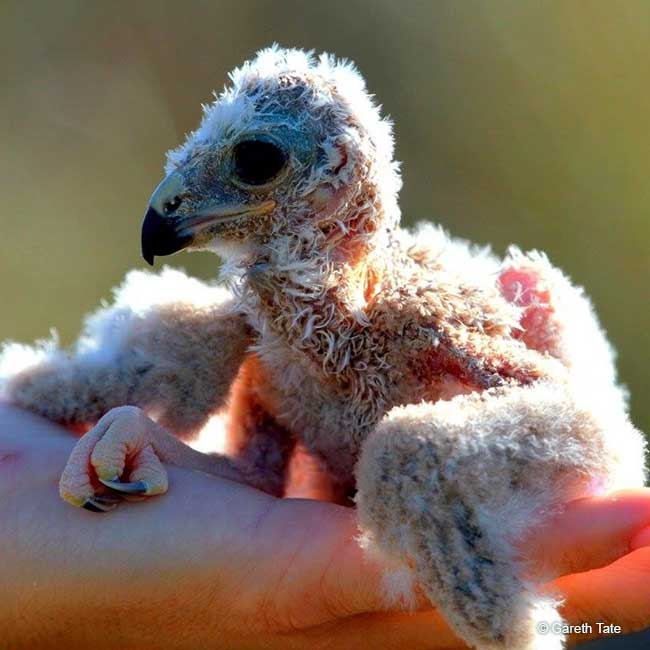
Creating Safe Space for Black Harriers
Black Harriers (Circus maurus) are endemic to southern Africa and are globally Endangered. There are less than 1,000 birds left, and their numbers are declining. With the increasing loss and fragmentation of key breeding habitats, the species also faces a more recent threat from South Africa’s rapidly growing wind energy sector. Black Harriers are prone to colliding with wind turbines, and if nothing is done about this emerging threat, predictions show that we can expect to witness the extinction of the species within our lifetime.
Our project is pioneering a new approach to improving the protection status of important breeding habitats in their last strongholds of South Africa. We are working with landowners at key Black Harrier breeding sites to develop conservation servitudes, guided by formal agreements and management plans. In addition, we are working with partners to develop the first wind turbine collision risk map for the species.
We will assist in capturing and fitting GPS tracking devices to Black Harriers, providing data on their flight behaviour and spatial use, which will be analysed for the collision risk models. These models will guide developers and government authorities in the planning stages of new wind energy developments to avoid building turbines in areas with a high collision risk to Black Harriers.
Creating Safe Space for Africa’s Vultures: The Vulture Safe Zone Project
Throughout southern Africa, the threats driving vulture population declines are complex and dynamic, varying from one region to the next. Although habitat loss, persecution, and electrocutions on power lines are major threats, the decline of Africa’s vultures is largely due to direct and indirect poisoning. To address the highly dynamic threat landscape across South Africa, the Endangered Wildlife Trust is spearheading the establishment of Vulture Safe Zones (VSZs).
A Vulture Safe Zone (VSZ) is an appropriately sized geographic area where targeted conservation measures are undertaken to address the key threats relevant to the vulture species present and to sustain viable wild populations. VSZs are developed in southern Africa to complement national and international efforts to reduce the impact of existing and emerging threats to stabilise and promote recovery of the existing vulture populations.
The VSZ concept arises from the joint CITES/CMS Multispecies Action Plan for Vultures. In VSZs, conservationists work with landowners, government agencies, and communities to secure large tracts of suitable habitat where land is managed in a vulture friendly manner and the threats to vultures are markedly reduced, so vulture populations can thrive.
We work directly with landowners and communities in these safe zones to reduce the impacts of threats such as poisoning and electrocutions or collisions or with energy infrastructure. We engage with owners of large land portions and empower them to manage their properties in wildlife-friendly ways. The EWT currently has five active VSZ Projects initiated or in preparation. These include the 1. Karoo VSZ (located between Beaufort West and Cradock), the 2. Lowveld VSZ (located in the Great Limpopo Transfrontier Conservation Area, the 3. Kalahari VSZ (located in the Kimberley/Mokala National Park node extending into the Askham region and along the Kuruman and Molopo rivers), the 4. Greater Mapungubwe VSZ (located along the Limpopo River linking Botswana, Zimbabwe, and South Africa) and the 5. Eastern Cape VSZ, with the plan to initiate one in 6. Bushmanland – centred around Brandvlei in the Northern Cape. The VSZ work is being adopted on a large scale by the National Vulture Task Force and implemented by key conservation organisations across the SADC countries under the auspices of the Vulture Safe Zone Alliance to address the threats and challenges vultures face in southern Africa. These projects have long-term lifespans to remove threats from the landscape and ensure this is sustained over time and thus will be implemented over the next ten years.
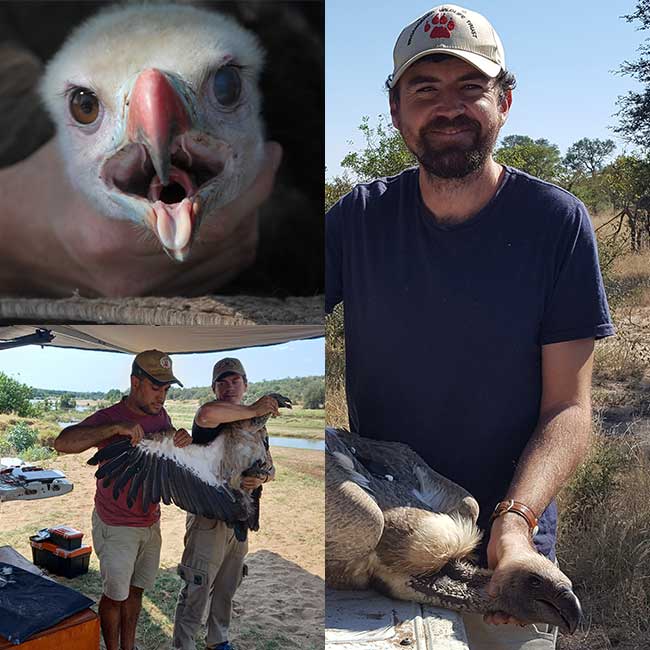
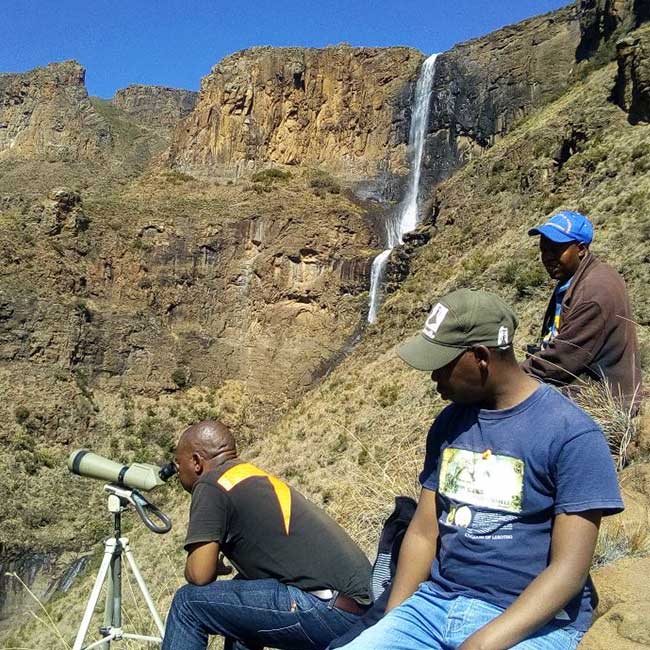
An Eye in the Sky
Thousands of vultures across Africa have been poisoned to supply the illegal wildlife trade, devastating populations and rapidly driving them towards extinction in the wild. Scavenging mammals, including lions, hyaenas, and Leopards, are also severely impacted by poisoning. A key factor limiting the capacity to reduce or avoid the largescale loss of wildlife is the difficulty locating or responding to poisoning events in time to save lives. Detecting a poison source and decontaminating poisoning scenes radically reduces the further loss of wildlife. Response teams may also save surviving animals and enable law enforcement officials to follow up on poisoning events swiftly.
We developed a pioneering rapid poisoning detection system called Eye in the Sky that harnesses vultures’ natural sentinel and foraging behaviour and pairs it with novel GPS-tracking technology. This system closely monitors the behavioural signatures in GPS-tracked vultures to remotely detect the presence of poison sources and feeding events associated with potentially poisoned-laced carcasses. This system was built to enhance law enforcement and response team capacity and efficiency while reducing the impact of wildlife poisoning in southern Africa.
The EWT and our partners are also developing monitoring and technology solutions to make our alert system practical on the frontline. The system has been programmed to send notifications and near real-time information to monitoring software platforms (e.g. EarthRanger, SMART Conservation) used by those on the ground. In concert with this, we have set up an ever-growing network of GPS-tracked vultures across poisoning hotspots in southern and East Africa, actively surveying extensive wilderness areas that would otherwise be impossible to monitor.
Wildlife Poisoning Intervention and Response
This project aligns closely with our Vulture Safe Zone Project and complements the Eye in the Sky project, ensuring that rapid responders are trained in poison response and scene management. Working with the EWT’s Vultures for Africa Programme, our Wildlife Poisoning Prevention and Intervention Project addresses the major threat of wildlife poisoning. We take reactive and proactive approaches to reduce the impact of poisoning on raptors, creating a more poison-safe and conscious South Africa. The project aims to:
- Remove poisons from core raptor areas
- Capacitate stakeholders, conservation officials, and law enforcement to respond to and manage poisoning events effectively
- Support law enforcement, legislation, and judiciary to improve prosecution success rates linked to the illegal poisoning of wildlife
- Educate and empower people to reduce their use of poisons
- Encourage positive changes in human attitudes and behaviour towards scavenging raptors
Our Wildlife Poisoning Response Training teaches a coordinated response and rapid assistance to poisoning incidents involving vultures and other scavenging raptors. The training focuses on building capacity in local law enforcement officers, such as the South African Police Service (SAPS), field rangers, conservation authorities (i.e. Ezemvelo KZN Wildlife, SANParks), local NGOs, local communities, and traditional healers. Our training focuses on decontaminating poisoning scenes to reduce further wildlife losses. It also covers handling and administering first aid to surviving vultures and other scavenging raptors at poisoning scenes. We supply Poison Response Kits (PRKs) to strategic locations and poisoning hotspots across southern Africa. This training also improves the management and investigation of poisoning crime scenes, leading to better law enforcement and prosecution success for poison-related incidents. Furthermore, this results in harsher sentences for offenders, which will discourage others from using poisons to kill wildlife.
This project also aims to phase out lead-containing bullets from across the vulture-rich sites of southern Africa, working closely with hunting and culling fraternities to increase awareness around leaded ammunition’s detrimental impacts on vultures and other wildlife and encourage them to use lead-free ammunition to cull or hunt game or livestock, or how to manage the carcasses of animals shot with leaded ammunition. Additionally, we provide hunters and farmers with information packs about the effects of leaded ammunition on wildlife, the alternatives available to them, and key contact details for individuals who can assist with further advice. We will also drive a campaign with the suppliers of non-leaded ammunition to market and promote the use of non-leaded ammunition.
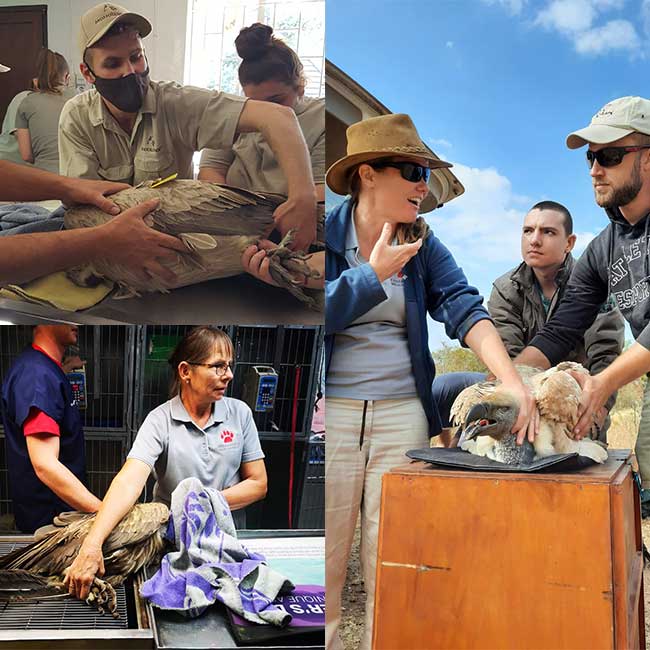
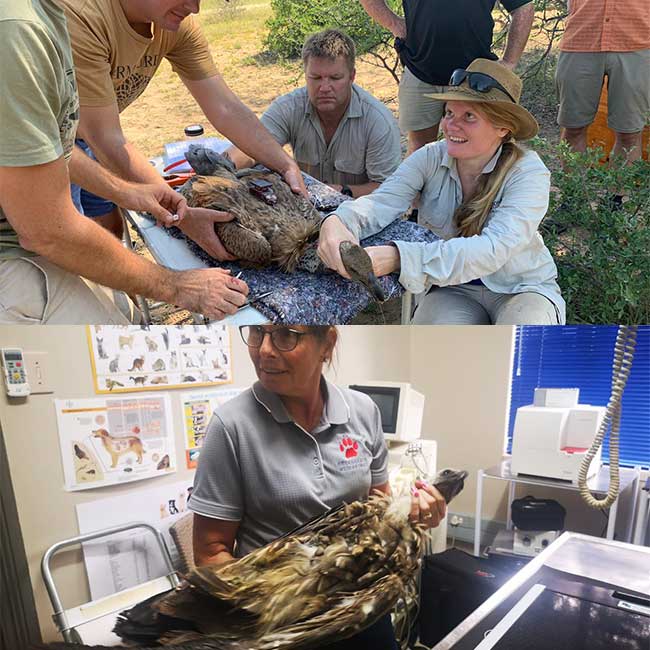
Arid Raptors Project
The arid parts of South Africa, including the Karoo and Kalahari, contain vital breeding and foraging habitat for Cape, White-backed, and Lappet-faced vultures and a diversity of other threatened raptors. With extensive, largely undeveloped landscapes and fewer threats, we view this area as one of the last conservation frontiers for vultures in South Africa. The EWT has a widespread, long-term presence in this region and has developed an important network of landowners and communities across the Karoo and Kalahari.
We empower landowners in this area through direct engagement, education, and awareness to support the conservation of raptors across the region, improve land management practices to benefit vultures and people, and reduce threats to vultures and their habitat. The project provides specialist input regarding developments and cellphone and electrical utilities across the region and addresses emerging threats to vultures, including renewable energy, tree-felling, and human-vulture conflict. This project also focuses on the rescue and rehabilitation of vultures and other raptors across the arid parts of South Africa (see our Raptor Rescue, Rehabilitation, and Support Project below).
Raptor Rescue, Rehabilitation, and Support
Every. Bird. Counts. The EWT and its partners are regularly called upon to rescue injured and poisoned raptors. We collect raptors and take them to the nearest suitable rehabilitation centre, where they are treated, fed, and supported in their recovery until they are fit enough to be released back into the wild. We have established an emergency fund to cover the costs of rescuing, transporting, and rehabilitating injured raptors and other large bird species, particularly vultures. This fund supports the EWT, rehabilitation centres, and individuals/volunteers in cases where long-term recovery is required for the birds and expenses and logistics are difficult to cover financially. It also covers costs for laboratory analyses and expenses for locating and retrieving GPS tracking devices on birds that have died.
Stories of Success
for birds of prey
Vulture Safe Zones
We have established a broad network of stakeholders and Vulture Safe Zone (VSZ) implementing parties and have gained commitment from over 350 property owners to become vulture-safe. Together, these properties extend over approximately 1.8 million ha across southern Africa. We assess each property to understand the local threats to vultures, raise awareness around vulture conservation, and start working with landowners to reduce these threats on the ground.
Our Karoo VSZ has grown into one of South Africa’s largest farmer-driven conservation initiatives in partnership with conservation organisations. In this Great Karoo heartland, farmers and other landowners partnered with the EWT, Rupert Nature Foundation, SANParks, Mountain Zebra Camdeboo Protected Environment (MZCPE), and SANParks Honorary Rangers to establish a VSZ. The Karoo VSZ is vast, spanning approximately 731,438 ha and includes three major protected areas, the Karoo, Camdeboo, and Mountain Zebra National Parks, and the MZCPE, over 90% of which is privately owned. Our long-term goal is to encourage Cape Vultures back to their historical range throughout this heartland and ultimately recover this population. We also aim to link the Karoo VSZ to Cape Vulture strongholds in the Eastern Cape.
Furthermore, we are encouraged that the owners of over half a million hectares in the Karoo have already stopped, or are committed to phasing out, the use of leaded ammunition and poisons to kill livestock predators. Promisingly, we have had reports of over 200 Cape Vultures sighted in our Karoo VSZ since the project’s inception, the product of increased awareness and reporting by farmers throughout the area and as the landscape becomes increasingly vulture safe.
The EWT’s VSZ work would not be possible without our partners, including the Associated Private Nature Reserves, BirdLife South Africa, BirdLife Zimbabwe, Blyolifant Private Nature Reserve, Ezemvelo KZN Wildlife,Kimberley Veterinary Clinic, Raptors Botswana, Moholoholo Rehabilitation Centre, SANParks, Wild Rivers Private Nature Reserve, and Wildlife ACT, as well as all the stakeholders, communities and landowners currently engaged in these projects. The work is made possible by Alu-Cab, the Bio-Bridge Initiative (Convention on Biological Diversity), Cennergi, Charl van der Merwe Trust, Cleveland Zoo, Disney Conservation Fund, Puy du Fou, Rand Merchant Bank, the Roy Mc Alpine Foundation, Rupert Nature Foundation, SANParks Honorary Rangers, and WindLab.
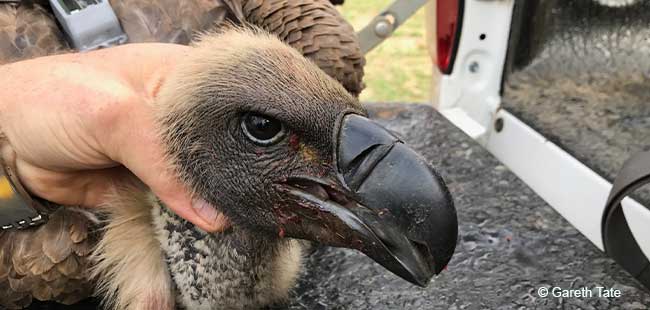
An Eye in the Sky
We have made considerable progress with our Eye in the Sky wildlife poisoning and carcass detection system by building relationships with key partners across poisoning hotspots in southern and east Africa, including Botswana, Mozambique, Zambia, Zimbabwe, and Uganda. We currently have almost 180 vultures of five species deployed for this system, covering approximately two million km².
These birds are pushing alerts through various front-end platforms actively used by response teams across Africa to react rapidly to poisoning events. We have established a key partnership with Contemplate Wild (CW), who helped us integrate the system into EarthRanger, a monitoring software platform used by many conservation management authorities, including the Kruger National Park. The integration allows us to monitor these birds in near real-time. CW is also helping us to develop alert endpoints, including WhatsApp and SMS, that will broadcast vulture alerts triggered by our system to relevant officials. We are building capacity to assist with ground truthing events to continuously improve the system’s accuracy.
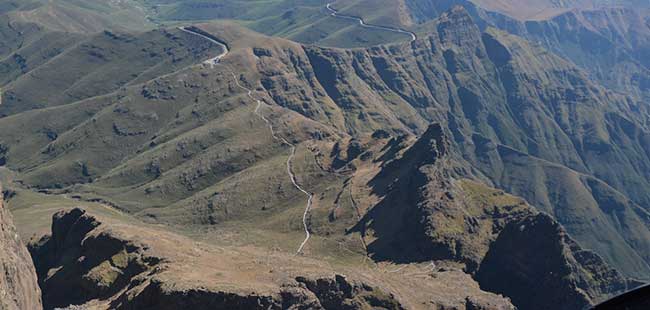
How you can help birds of prey
- Prevent the unnecessary poisoning of birds of prey:
- Do not use rodenticides, even if they claim to be raptor friendly
- Do not use poison to control and kill predators, including lion, hyaena, Leopard, Cheetah, jackal, and Caracal
- Do not use poison to control and kill crop raiding and crop-damaging species, including monkeys, baboons, elephants, and birds
- Do not use poison to kill wildlife for its meat, skin, or body parts for trade or use in traditional medicine
- Only use lead-free ammunition to cull livestock or hunt game and remove any lead-shot carcasses from the landscape to ensure no scavenging raptors are exposed to the lead
- Modify unsafe water reservoirs using ladders or ramps to prevent raptors from drowning
- Report any injured or killed raptors on powerlines to the EWT toll-free number (0860 111 535) or email us to trigger the Eskom Wildlife Incident Management Process
- Report sightings of tagged raptors, including ringed raptors, GPS tagged, or wing tagged vultures, by emailing us
- Protect breeding raptors from disturbance and developments
- Do not use treat game or livestock with non-steroidal anti-inflammatory drugs (NSAIDs) and other veterinary drugs classified as toxic to birdlife, such as Diclofenac or Ketofen (Ketoprofen)
- Manage any supplementary feeding sites, also known as vulture restaurants, according to the recommended Vulture Safe Zone guidelines and ensure carcasses used are lead- and contaminant-free (including NSAIDS and other harmful veterinary drugs).
- If you have any problems involving raptors, including livestock loss to eagles, please don’t take matters into your own hands. Call or email our experienced team to assist.
vultures
for africa
African vultures have declined drastically over the last 30 years, and four of the 11 species are now Critically Endangered. The EWT’s Vultures for Africa Programme implements specific actions that address poisoning as the most significant threat to African vultures
7
Species
17
countries
6,5k
People trained
